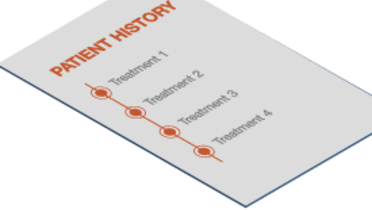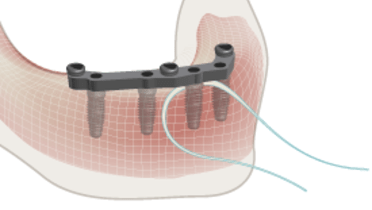-
0
Patient Assessment
- 0.1 Patient demand
- 0.2 Overarching considerations
- 0.3 Local history
- 0.4 Anatomical location
- 0.5 General patient history
-
0.6
Risk assessment & special high risk categories
- 5.1 Risk assessment & special high risk categories
- 5.2 age
- 5.3 Compliance
- 5.4 Smoking
- 5.5 Drug abuse
- 5.6 Recreational drugs and alcohol abuse
- 5.7 Parafunctions
- 5.8 Diabetes
- 5.9 Osteoporosis
- 5.10 Coagulation disorders and anticoagulant therapy
- 5.11 Steroids
- 5.12 Bisphosphonates
- 5.13 BRONJ / ARONJ
- 5.14 Radiotherapy
- 5.15 Risk factors
-
1
Diagnostics
-
1.1
Clinical Assessment
- 0.1 Lip line
- 0.2 Mouth opening
- 0.3 Vertical dimension
- 0.4 Maxillo-mandibular relationship
- 0.5 TMD
- 0.6 Existing prosthesis
- 0.7 Muco-gingival junction
- 0.8 Hyposalivation and Xerostomia
- 1.2 Clinical findings
-
1.3
Clinical diagnostic assessments
- 2.1 Microbiology
- 2.2 Salivary output
-
1.4
Diagnostic imaging
- 3.1 Imaging overview
- 3.2 Intraoral radiographs
- 3.3 Panoramic
- 3.4 CBCT
- 3.5 CT
- 1.5 Diagnostic prosthodontic guides
-
1.1
Clinical Assessment
-
2
Treatment Options
- 2.1 Mucosally-supported
-
2.2
Implant-retained/supported, general
- 1.1 Prosthodontic options overview
- 1.2 Number of implants maxilla and mandible
- 1.3 Time to function
- 1.4 Submerged or non-submerged
- 1.5 Soft tissue management
- 1.6 Hard tissue management, mandible
- 1.7 Hard tissue management, maxilla
- 1.8 Need for grafting
- 1.9 Healed vs fresh extraction socket
- 1.10 Digital treatment planning protocols
- 2.3 Implant prosthetics - removable
-
2.4
Implant prosthetics - fixed
- 2.5 Comprehensive treatment concepts
-
3
Treatment Procedures
-
3.1
Surgical
-
3.2
Removable prosthetics
-
3.3
Fixed prosthetics
-
3.1
Surgical
- 4 Aftercare
Compliance
Key points
- Is the patient able and motivated to comply and partner with the clinician during treatment and aftercare phases? How will non-compliance affect the probability of treatment success?
- For patients unwilling or unable to be sufficiently compliant, consider simplified prosthetic design and even non-implant based therapy
Patient compliance
Implant based treatment is a comprehensive long-term therapy with various treatment steps and ongoing need for adequate aftercare. It therefore requires considerable involvement, cooperation and dedication – compliance – from the patient. Therefore, during the patient assessment phase, the clinician must evaluate if the patient is able and motivated to follow a long-term treatment and aftercare.
To enable the patient to be fully informed of the requirements for long-term success, a discussion of treatment times and timelines, importance of compliance, adaptation of behavior and limitations during treatment time should be initiated by the clinician. Examples of items to discuss are smoking, provisional prostheses, limited chewing forces during healing phase, interference with social life, temporary discomfort, morbidity, possible need to wear a nightguard after treatment, and risks of therapy.
If the clinician doubts whether the patient will be sufficiently compliant for implant-based therapy, non implant-based treatment alternatives with less treatment complexity and maintenance may be indicated. By focusing on simplified prosthetic solutions and avoiding surgical treatment a patient-centered treatment plan is finalized (refer also to chapter Patient demand).
Key considerations during the patient assessment phase regarding compliance
Evaluate if:
- from a medical, physical, emotional, psychological and psycho-social perspective the patient is able to cope with the proposed treatment and follow the necessary maintenance procedures
- the patient is motivated and able to invest the time to comply with the required treatment and maintenance procedures and if patient is physically able to do so
- family/social environment and work situation support the treatment efforts
- the patient can afford the treatment and if third party reimbursement is available
Elderly patients
In elderly and/or frail patients, the choice of treatment may be based on whether the patient can adequately clean and maintain the prosthesis. If concerns regarding dexterity or compliance exist, a simplified prosthesis design, easy to maintain and to clean, is indicated. In addition, the clinician should consider if with such patients there are relatives or other helpers who can assist the patient with aftercare and oral hygiene of the prosthesis and accompanying implants. Often overlooked is the feasibility of return visits by the patient for treatment and maintenance care.





